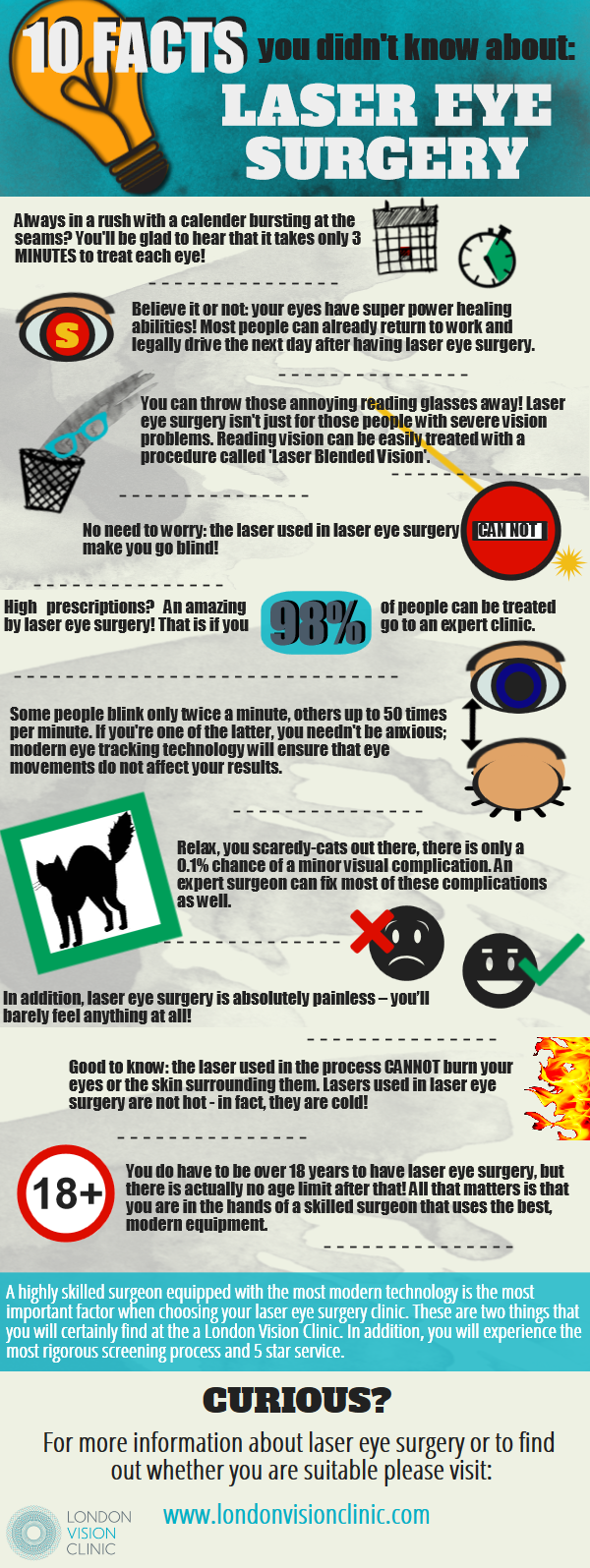Just How Does SMILE Eye Surgical Procedure Contrast To LASIK And PRK?
Just How Does SMILE Eye Surgical Procedure Contrast To LASIK And PRK?
Blog Article
Created By-McElroy Michelsen
If you have actually been considering SMILE eye surgical procedure, you may wonder how it compares to LASIK and PRK. Each procedure has its own collection of benefits and factors to consider. From quicker healing times to potential threats, there are vital differences you must understand before making a decision. Comprehending these distinctions will certainly help you make an enlightened option that aligns with your details demands and expectations. Curious to know even more concerning just how these treatments compare thoroughly? Keep on checking out to obtain a detailed understanding of SMILE, LASIK, and PRK.
SMILE Eye Surgery Overview
If you're thinking about SMILE eye surgical treatment, you'll discover it to be a minimally intrusive procedure with a quick healing time. Throughout SMILE (Little Cut Lenticule Extraction), a laser is utilized to produce a tiny, exact laceration in the cornea to get rid of a tiny item of cells, improving it to correct your vision. This varies from LASIK, where a flap is developed, and PRK, where the outer layer of the cornea is entirely removed.
One of the key benefits of SMILE is its minimally intrusive nature, leading to a faster recovery process and less discomfort post-surgery. The recovery time for SMILE is relatively quick, with lots of patients experiencing improved vision within a day or more. This makes it a preferred selection for those looking for a hassle-free and reliable vision correction procedure. In addition, SMILE has been revealed to have a reduced risk of completely dry eye disorder contrasted to LASIK, making it a favorable alternative for people worried about this prospective negative effects.
Differences In Between SMILE, LASIK, and PRK
When contrasting SMILE, LASIK, and PRK eye surgical procedures, it's important to understand the distinctive methods utilized in each treatment for vision correction.
SMILE (Tiny Laceration Lenticule Extraction) is a minimally intrusive procedure that involves producing a little cut to remove a lenticule from the cornea, reshaping it to fix vision.
LASIK (Laser-Assisted Sitting Keratomileusis) includes developing a slim flap on the cornea, using a laser to reshape the underlying tissue, and afterwards repositioning the flap.
PRK (Photorefractive Keratectomy) eliminates the outer layer of the cornea before improving the tissue with a laser.
The primary difference lies in the way the cornea is accessed and treated. SMILE is flapless, making it a good alternative for people with thin corneas or those involved in contact sports. Surgery Cost LASIK provides fast aesthetic healing as a result of the flap creation, but it might position a greater threat of flap-related issues. PRK, although having a much longer recuperation period, stays clear of flap-related problems completely.
Comprehending these differences is important in choosing one of the most suitable procedure for your vision improvement needs.
Benefits And Drawbacks Comparison
To assess the advantages and disadvantages of SMILE, LASIK, and PRK eye surgeries, it's vital to think about the specific advantages and potential limitations of each treatment. SMILE surgical treatment uses the advantage of a minimally intrusive treatment, with a smaller sized cut and potentially quicker healing time compared to LASIK and PRK. Top Lv Eye Surgery reduces the threat of dry eye post-surgery, an usual negative effects of LASIK. Nevertheless, SMILE may have restrictions in dealing with higher levels of nearsightedness or astigmatism compared to LASIK.
LASIK surgical treatment provides rapid visual recuperation and very little pain throughout the procedure. It's highly reliable in treating a wide range of refractive errors, including nearsightedness, hyperopia, and astigmatism. Yet, LASIK brings a risk of flap complications, which can impact the corneal framework.
PRK eye surgery, while not as prominent as LASIK, avoids creating a corneal flap, lowering the danger of flap-related complications. It appropriates for clients with thin corneas or uneven corneal surface areas. Nonetheless, PRK has a much longer recuperation time and may include a lot more discomfort during the recovery process.
Final thought
So, when it concerns selecting in between SMILE, LASIK, and PRK, think of it like picking the perfect pair of shoes. SMILE resembles a streamlined, comfortable pair of sneakers - fast and very easy.
LASIK is extra like trendy high heels - flashy and quickly, yet with some prospective risks.
PRK resembles sturdy hiking boots - dependable and resilient, however calling for a little bit even more time and effort.
Eventually, the most effective selection relies on your individual demands and preferences.
